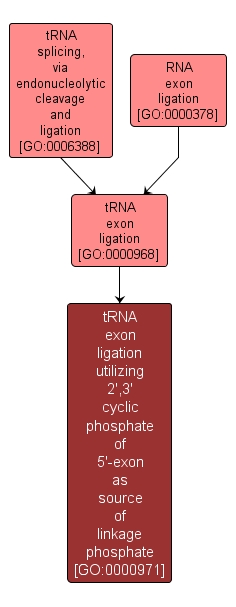GO TERM SUMMARY
|
| Name: |
tRNA exon ligation utilizing 2',3' cyclic phosphate of 5'-exon as source of linkage phosphate |
| Acc: |
GO:0000971 |
| Aspect: |
Biological Process |
| Desc: |
The process by which the two exons of a pre-tRNA which has had the intron removed are rejoined where the splice junction phosphate is derived from the 2',3' cyclic phosphate at the 3'-end of the 5'-exon. This type of ligation to rejoin the 5' and 3' exons of a tRNA is observed in wheat, Chlamydomonas, and vertebrate species including humans. |
|

|
INTERACTIVE GO GRAPH
|














